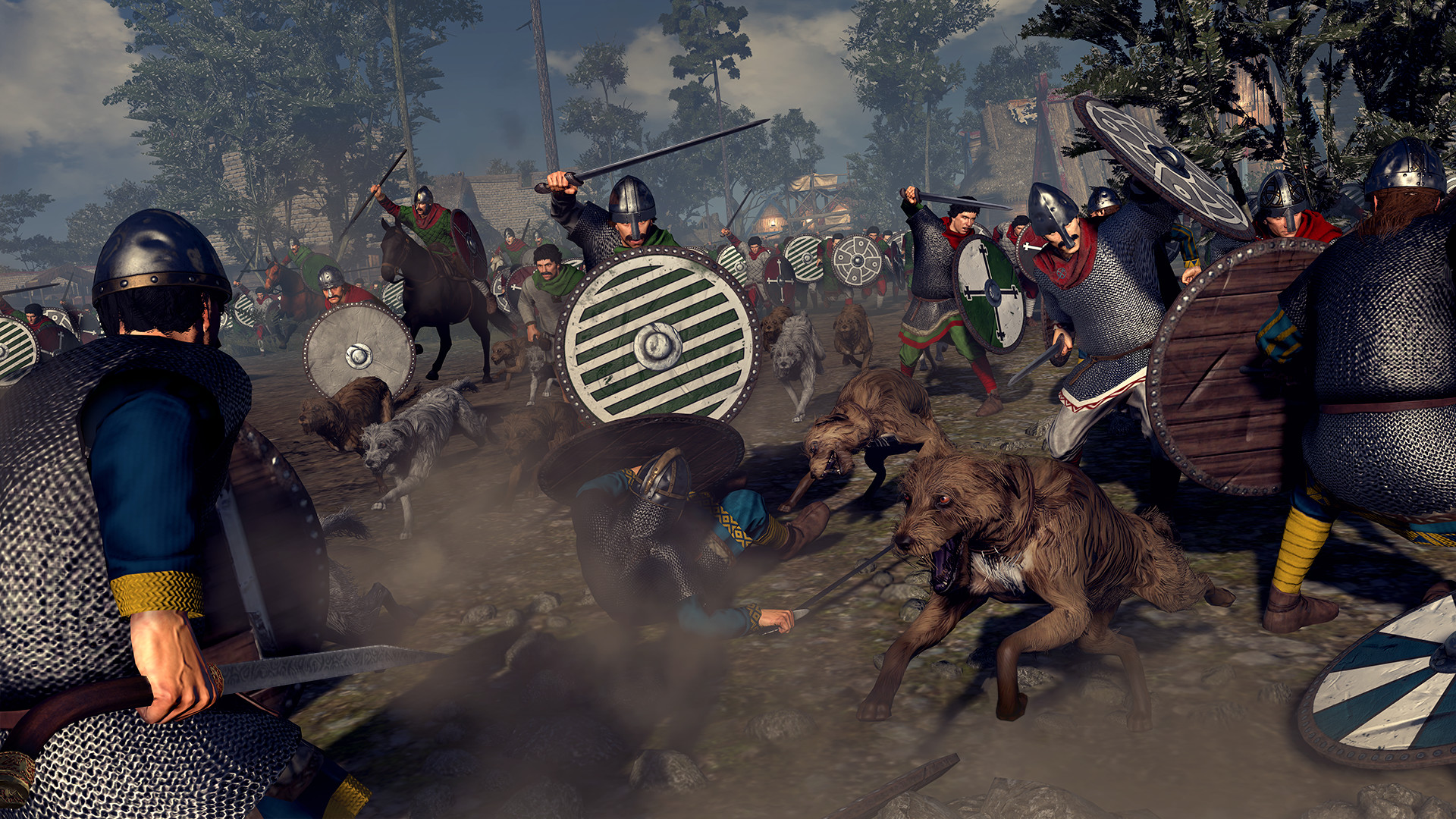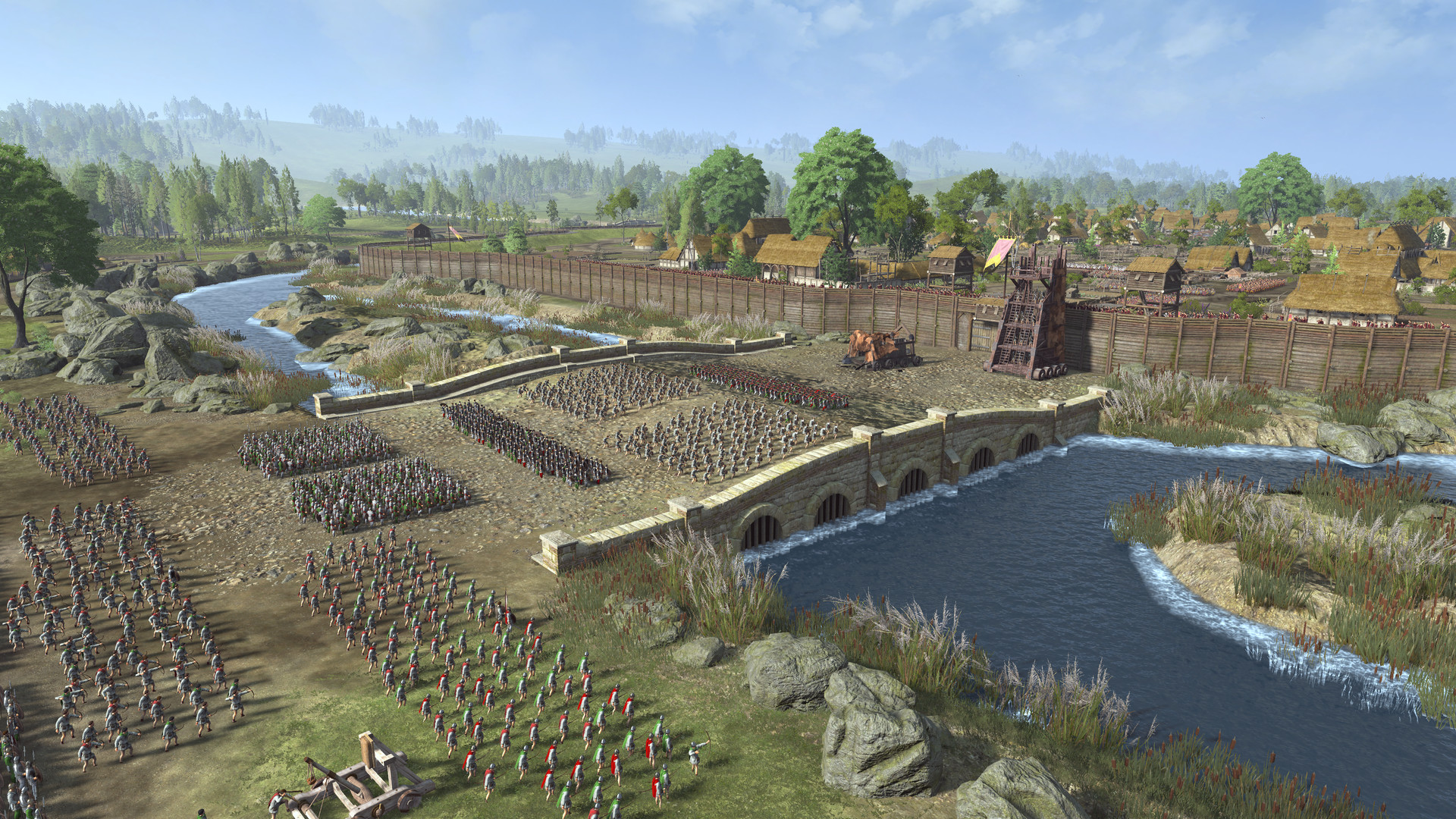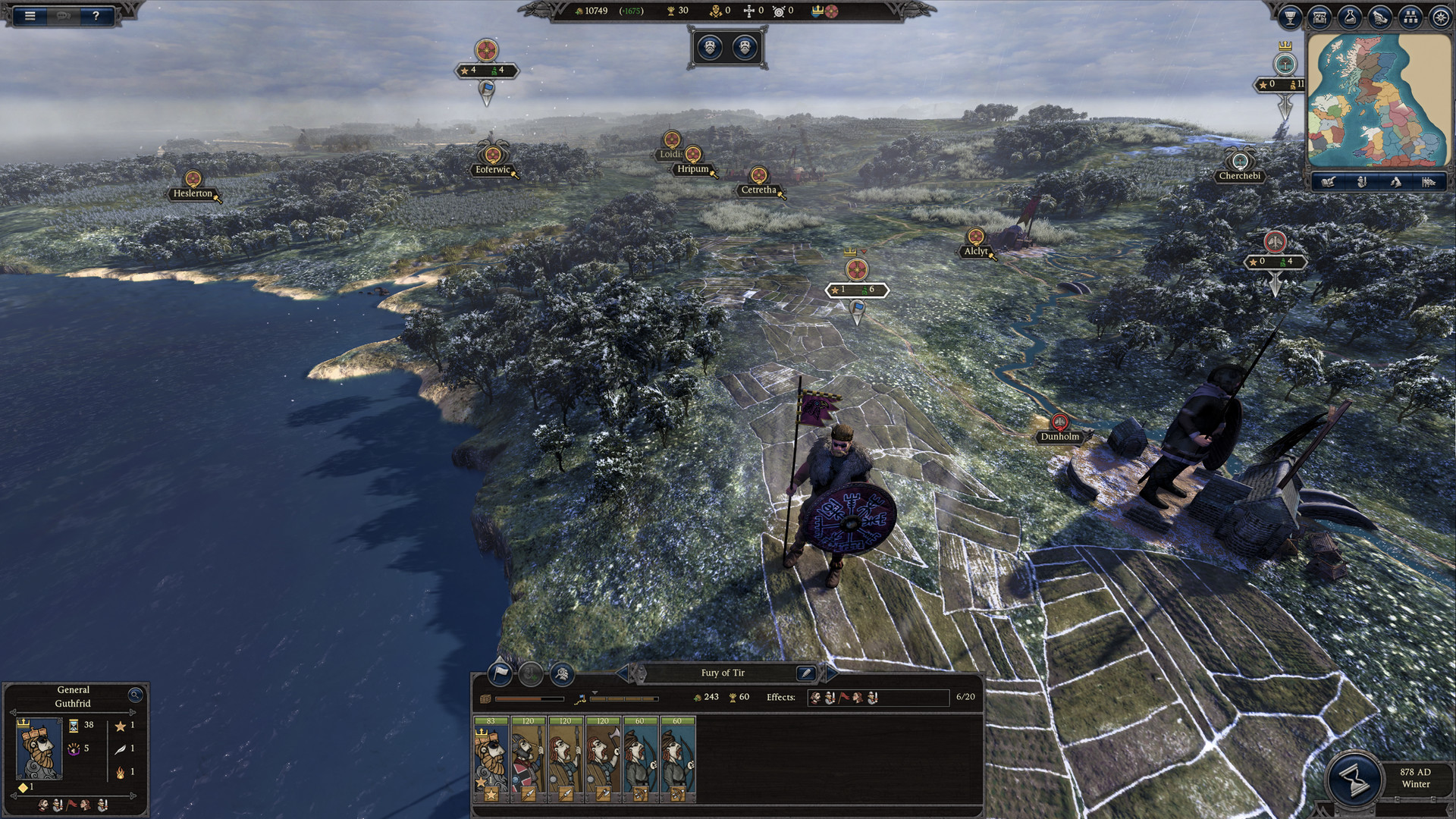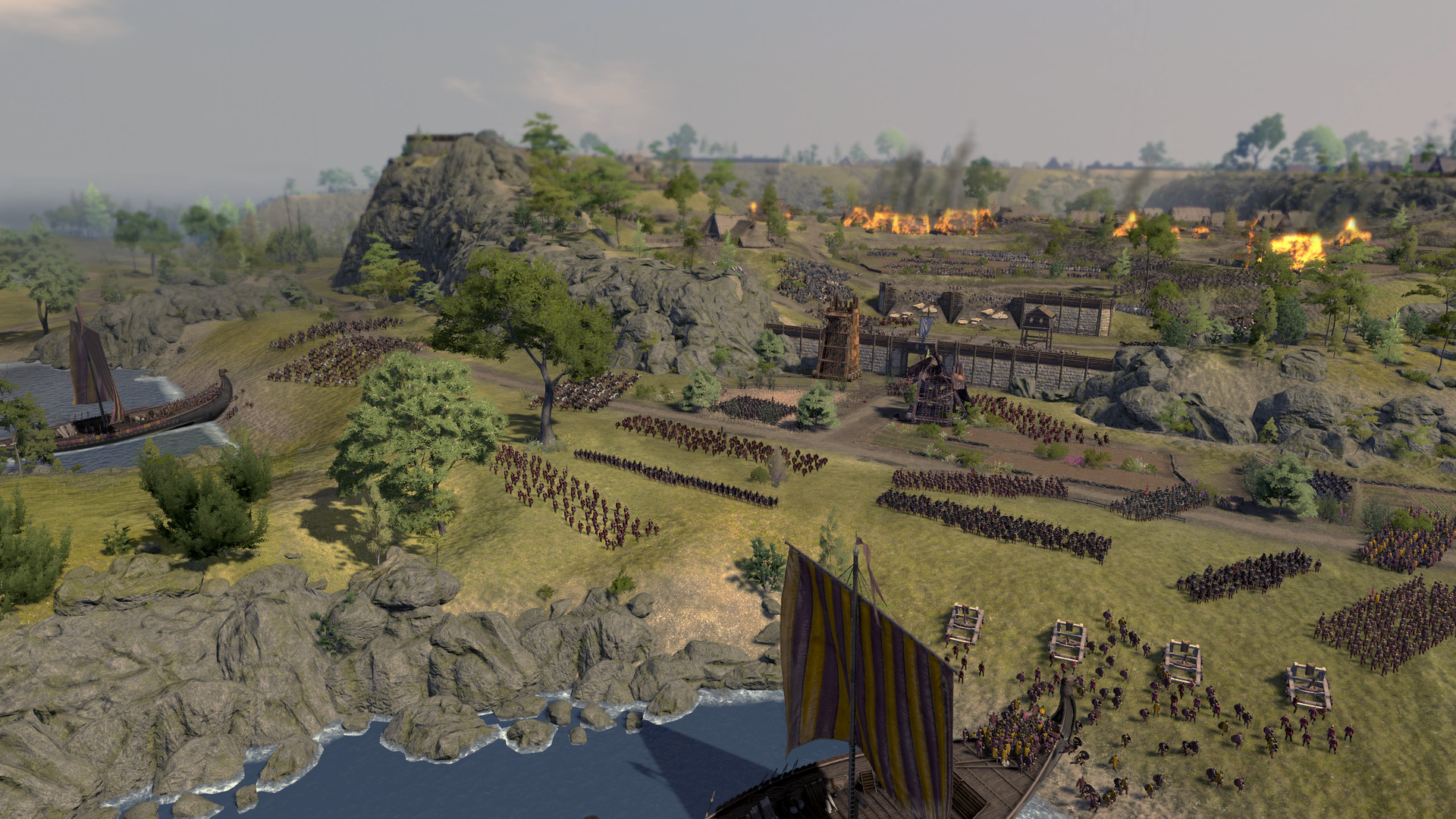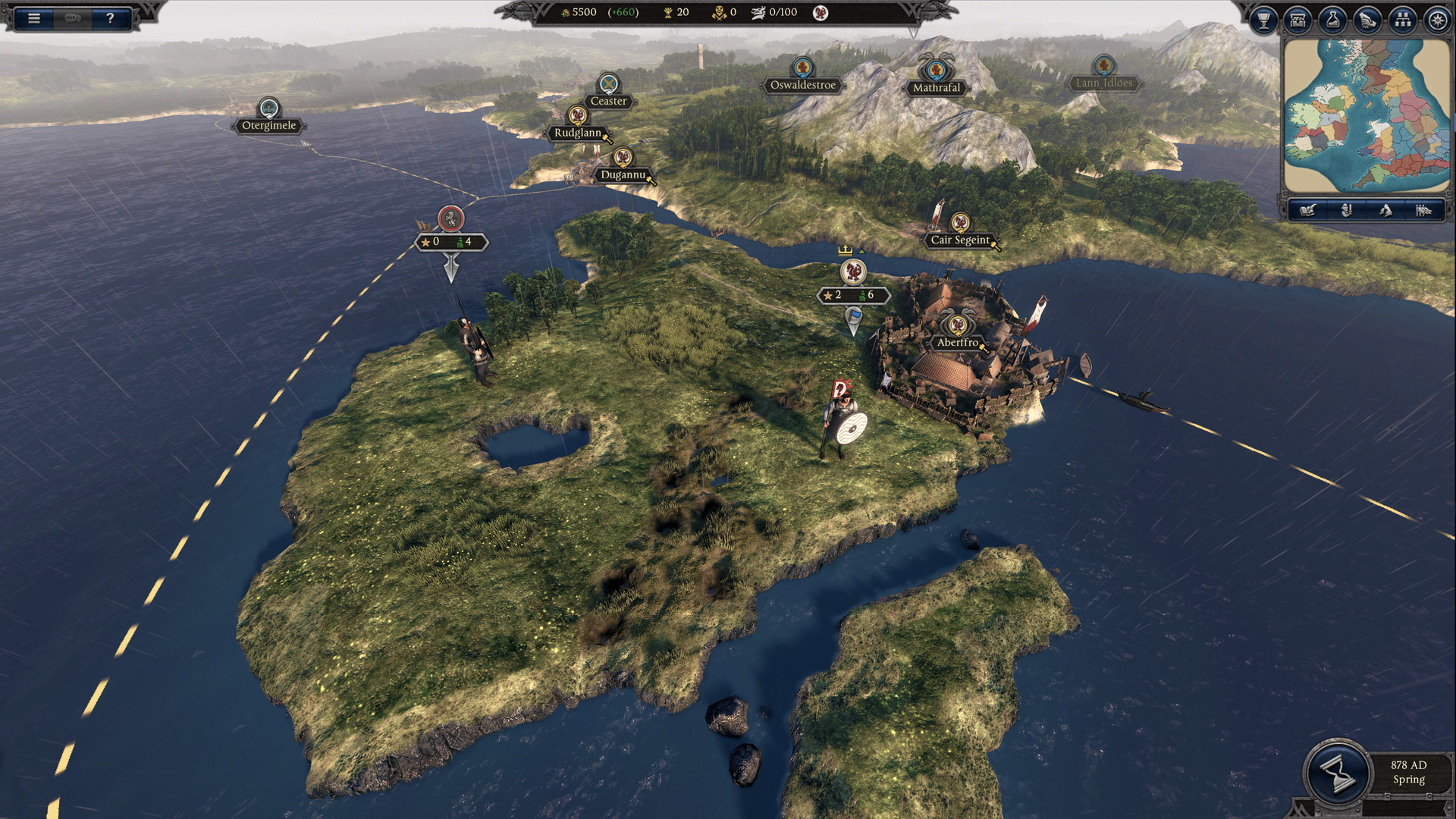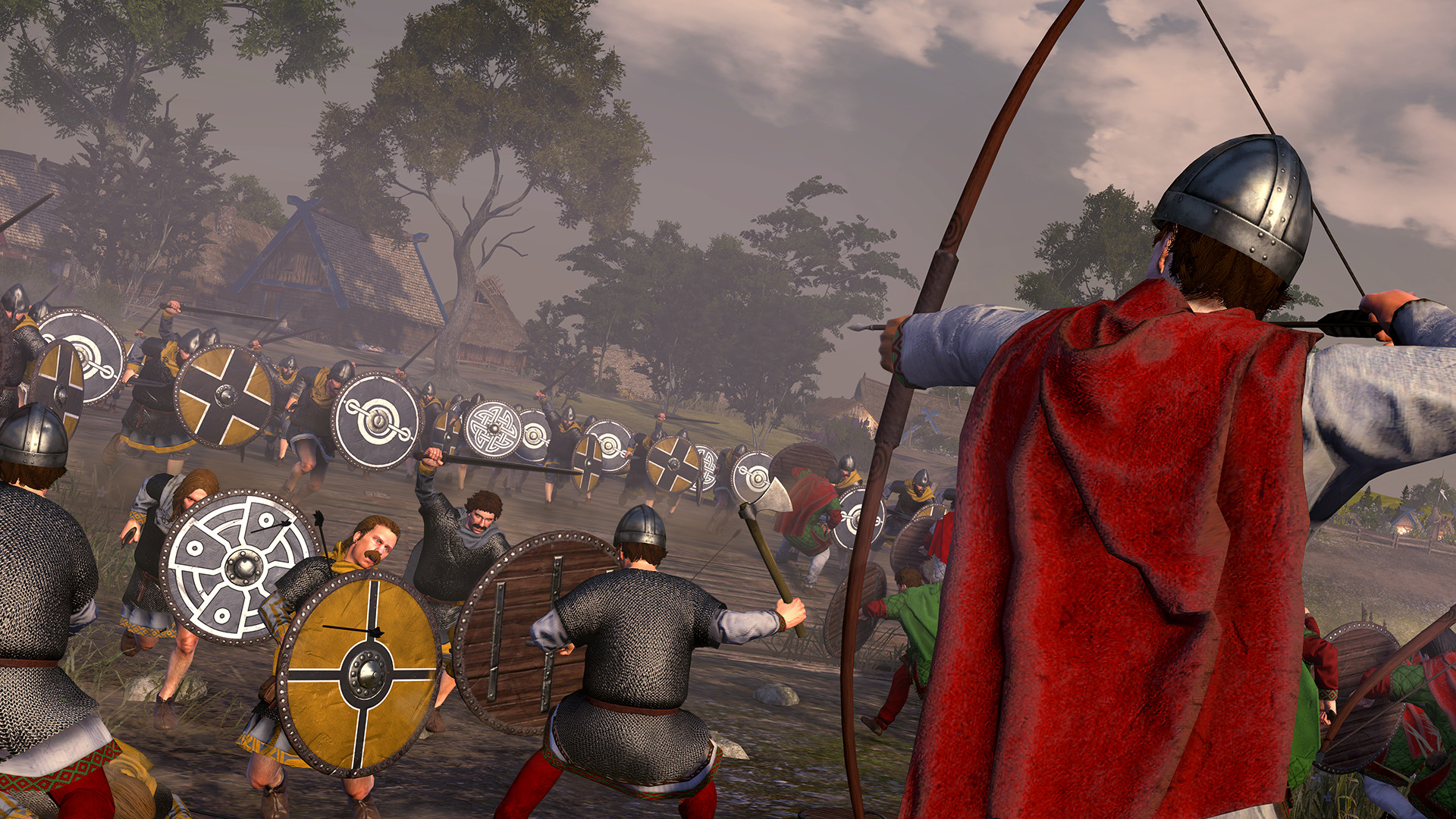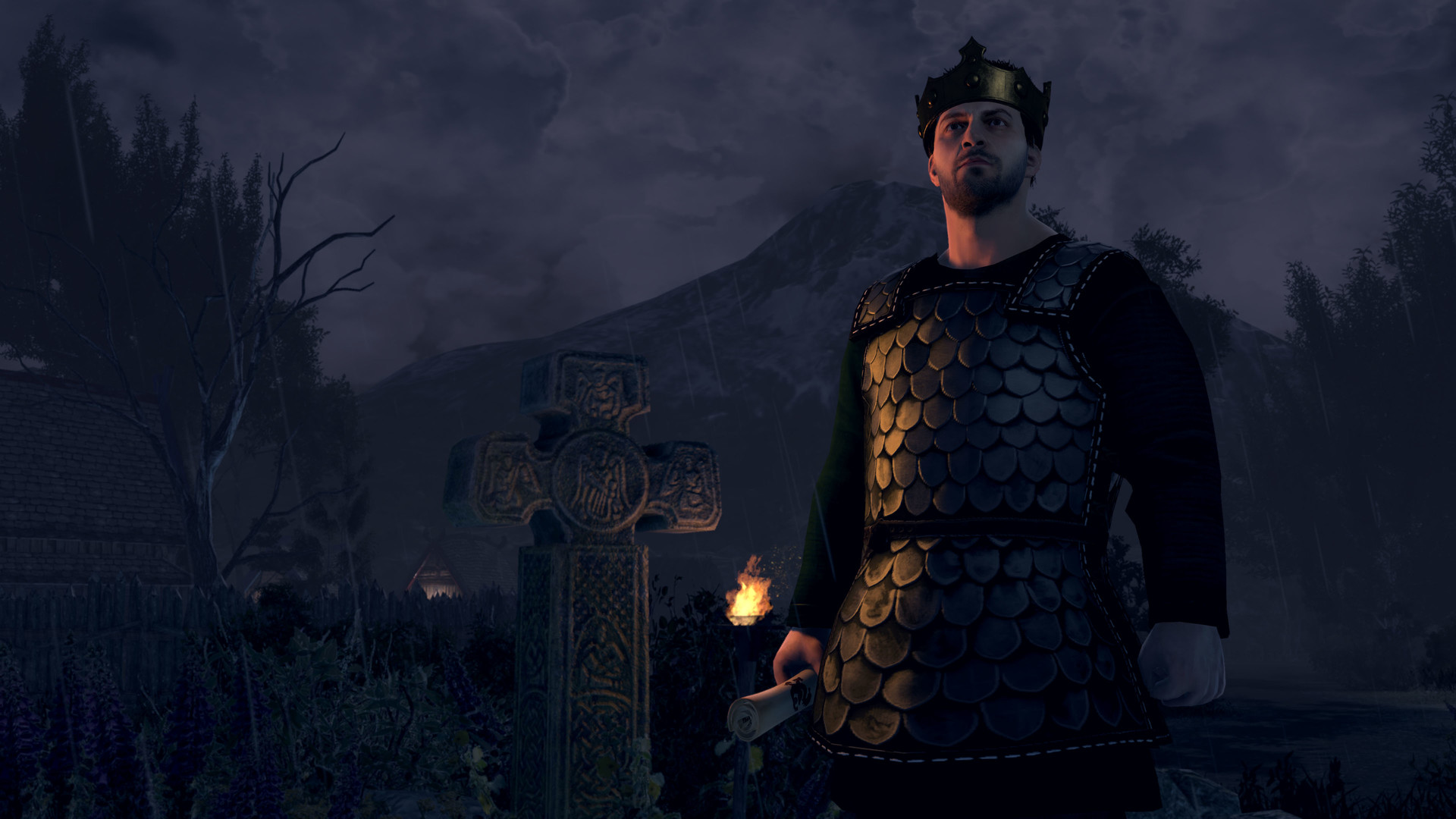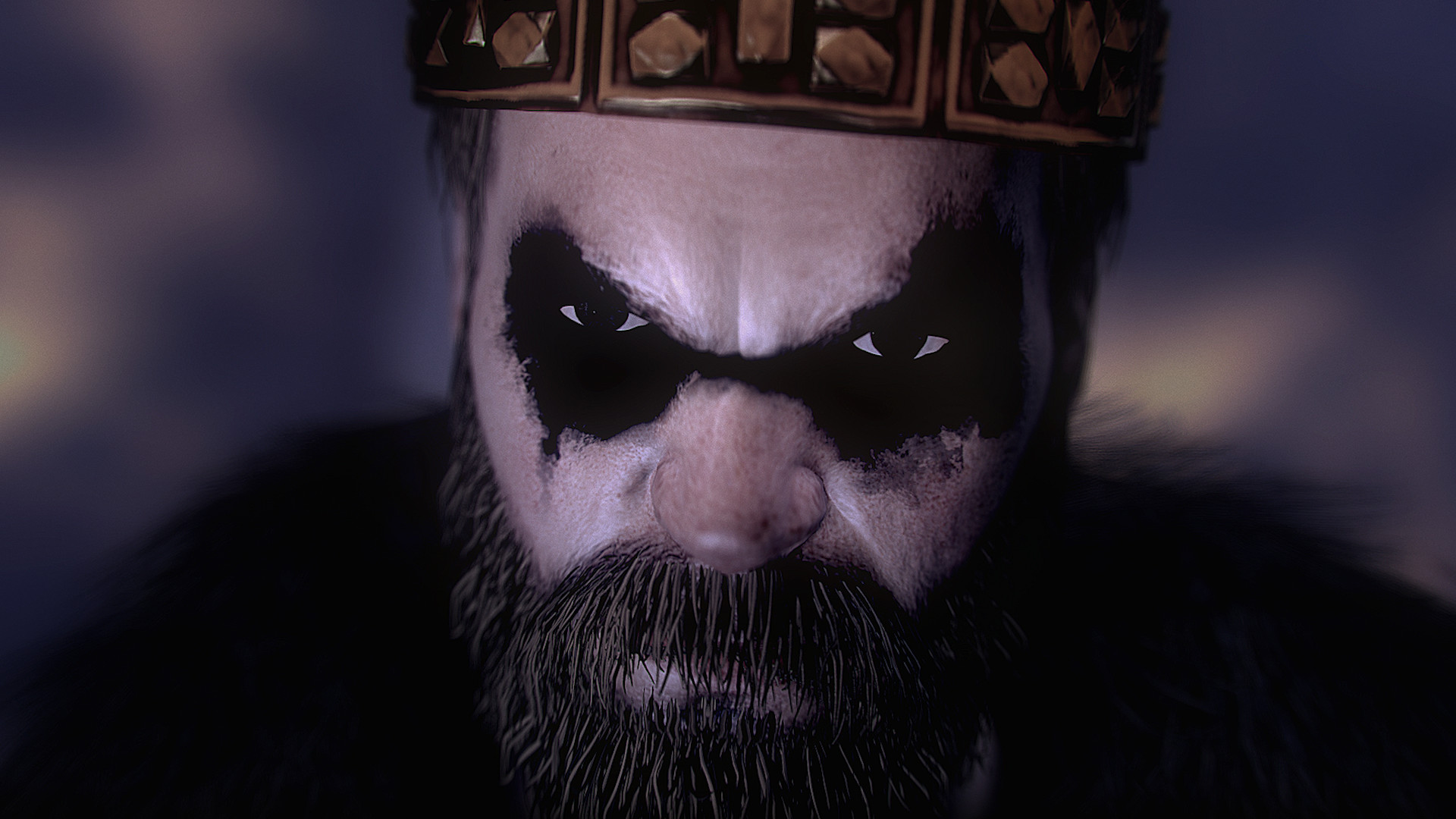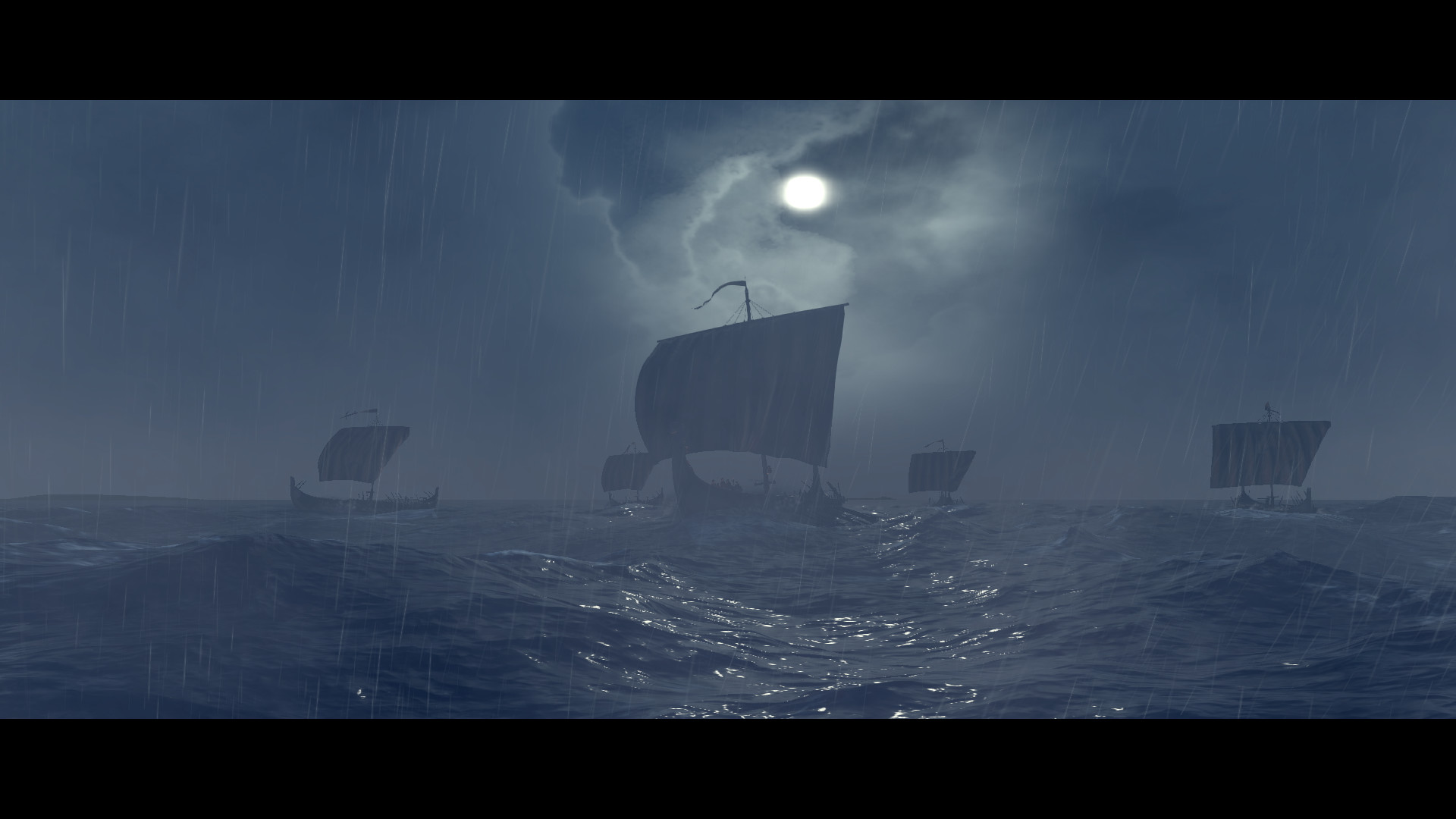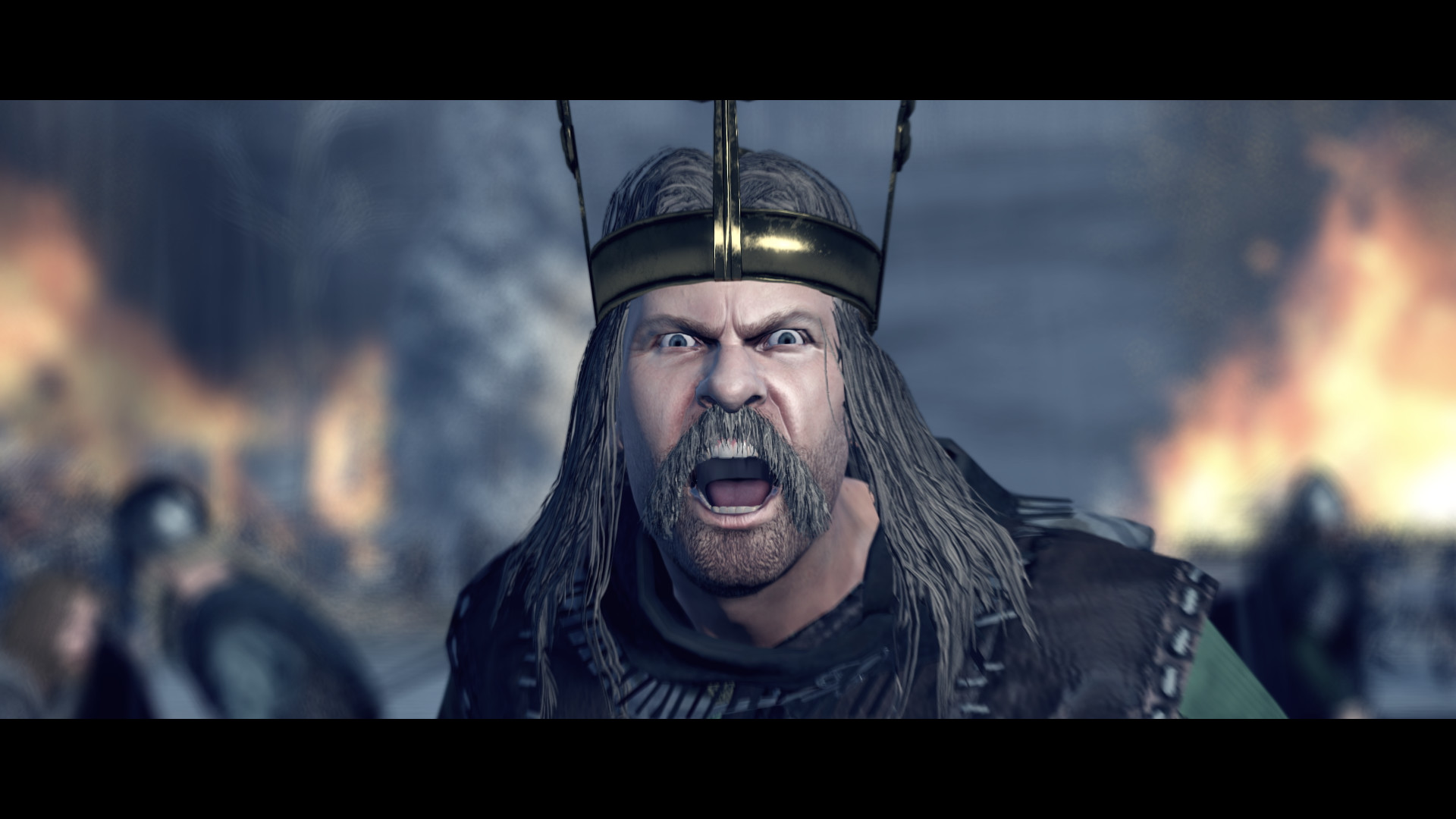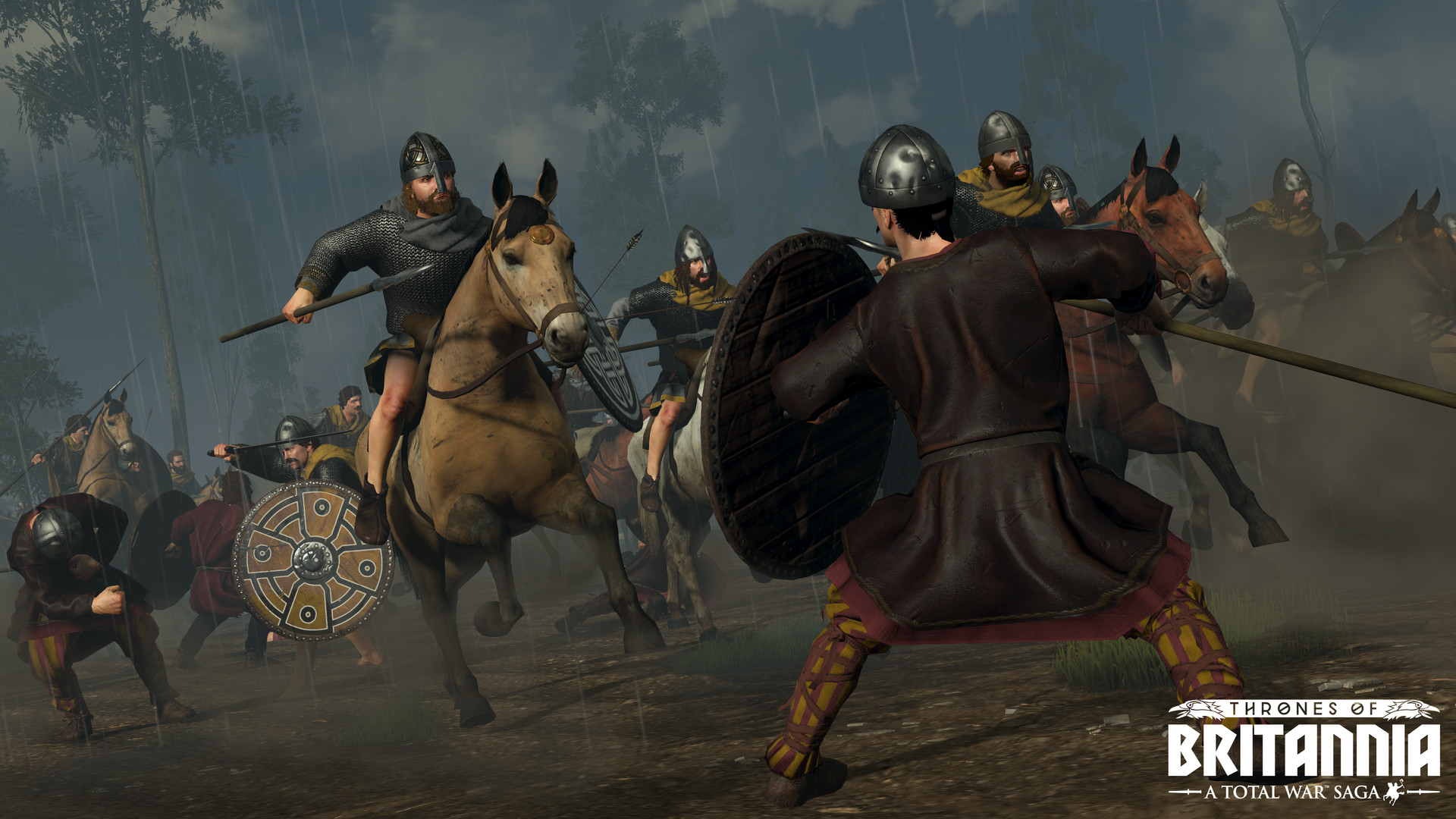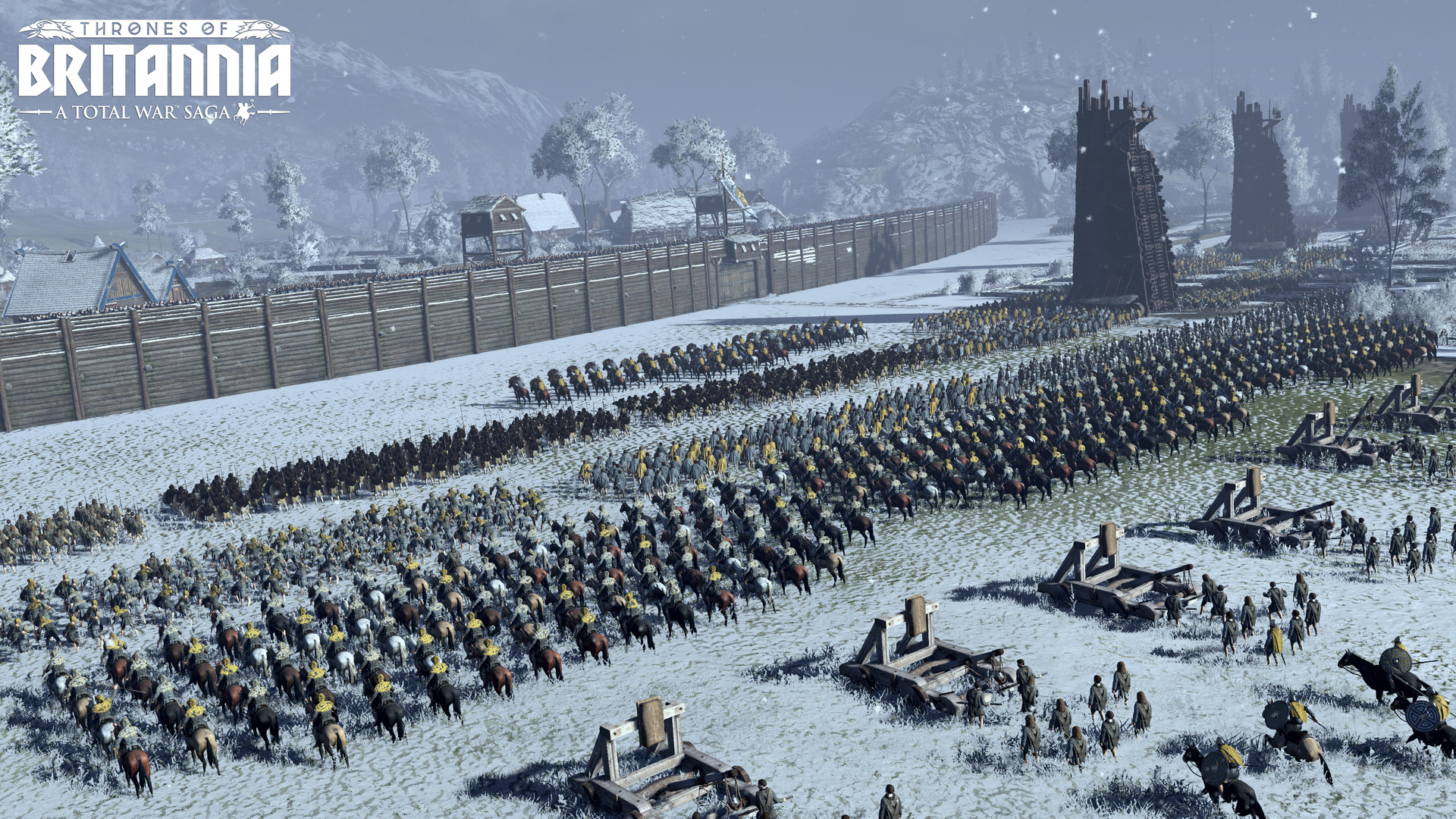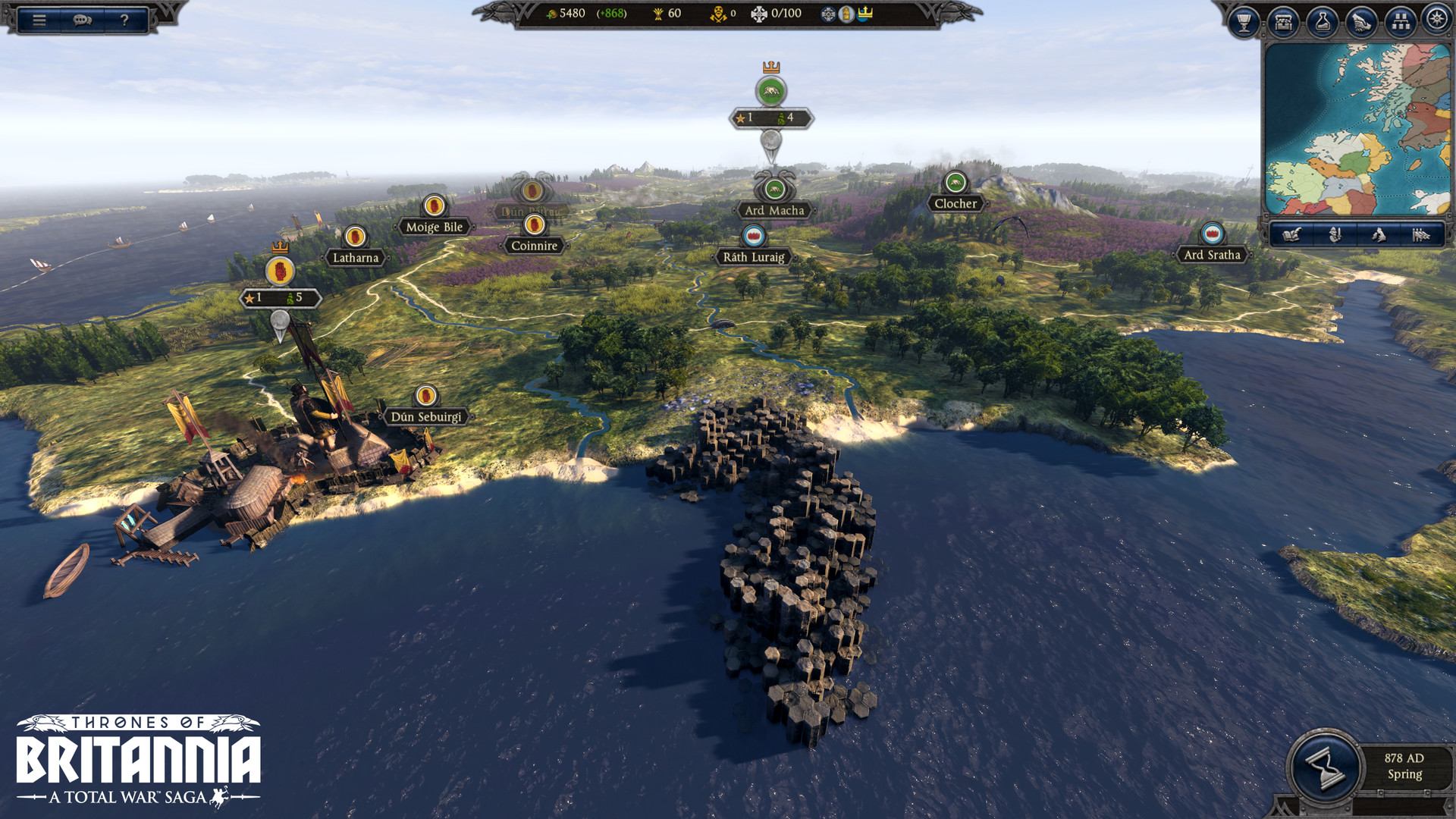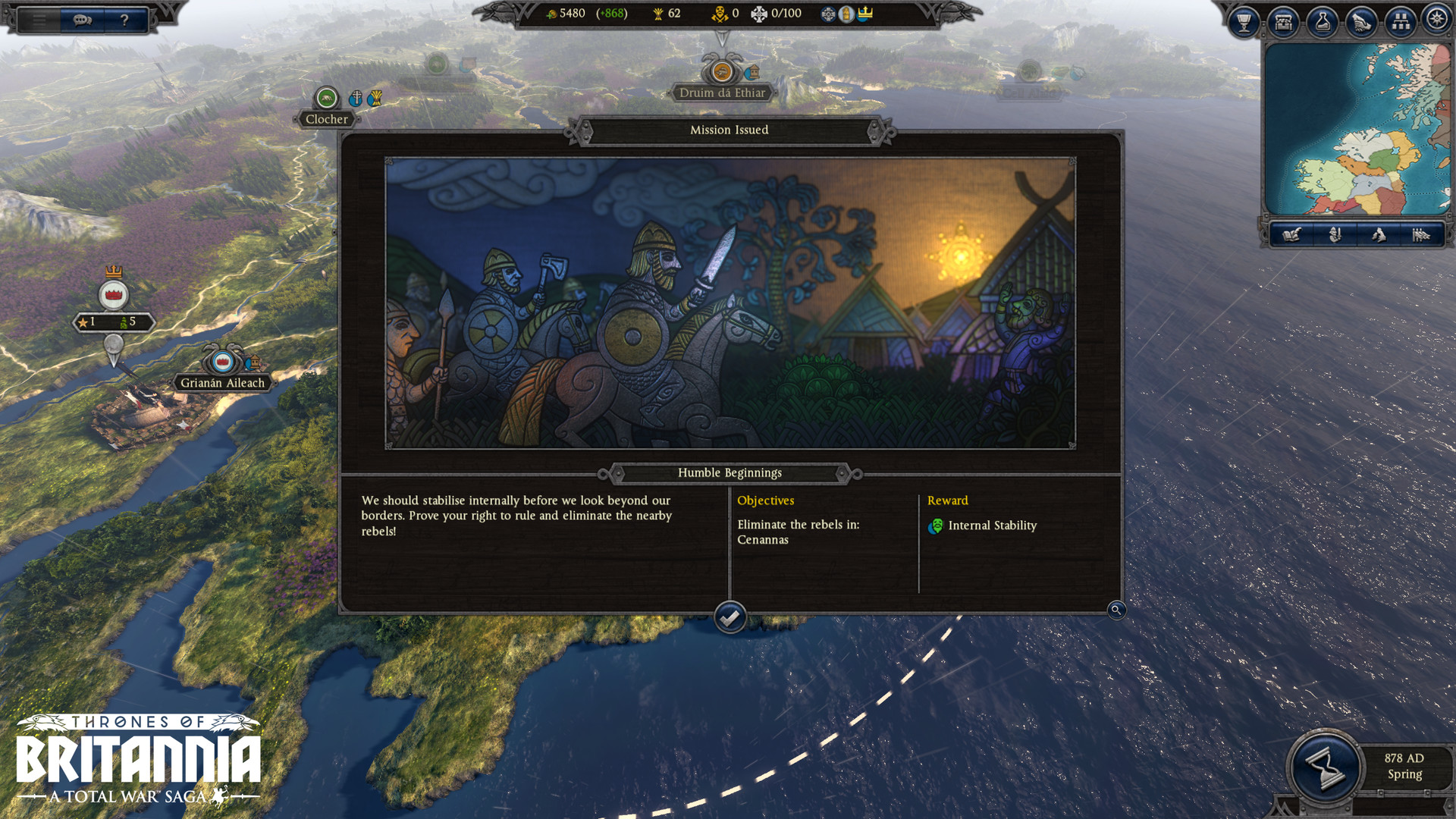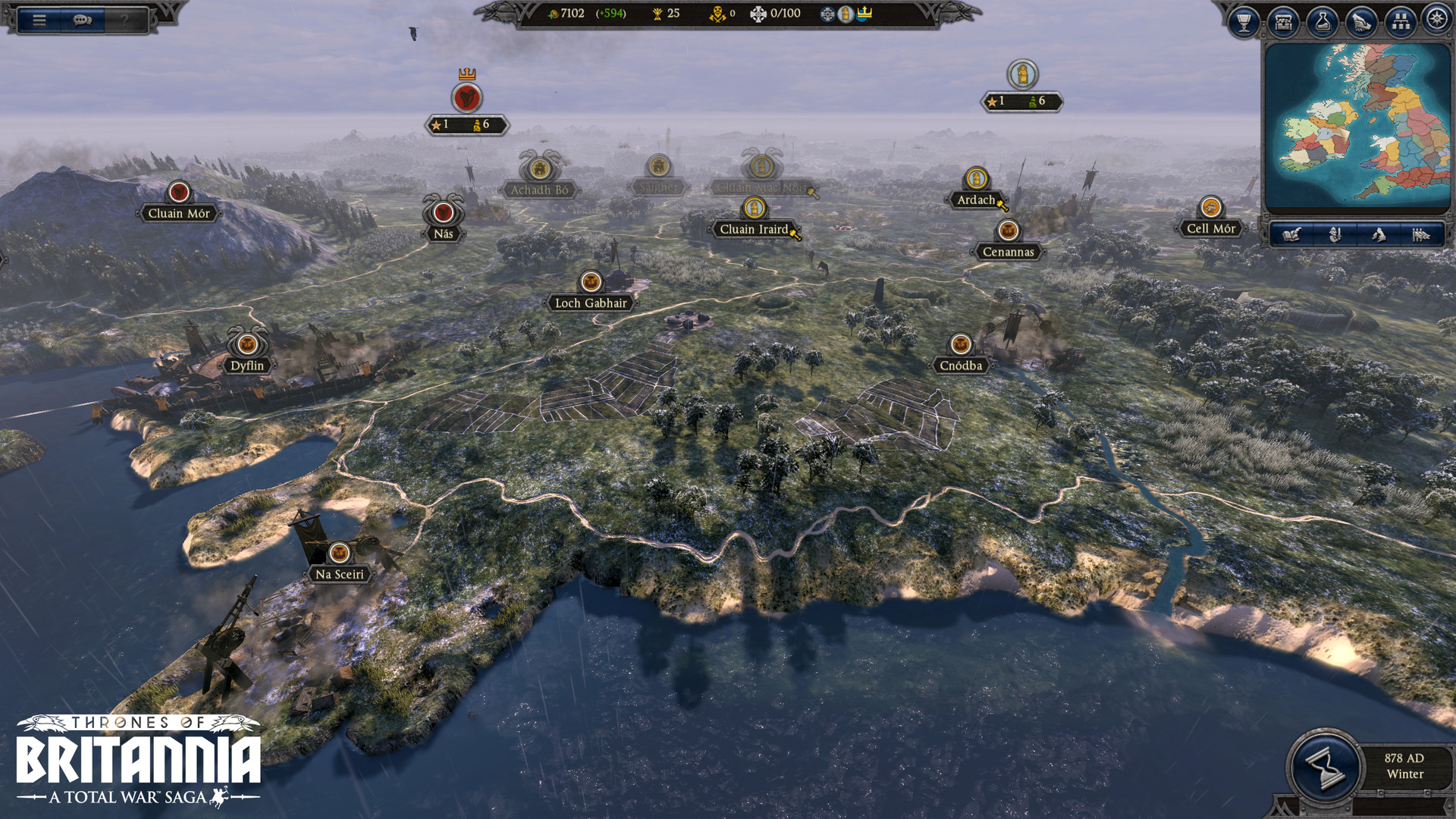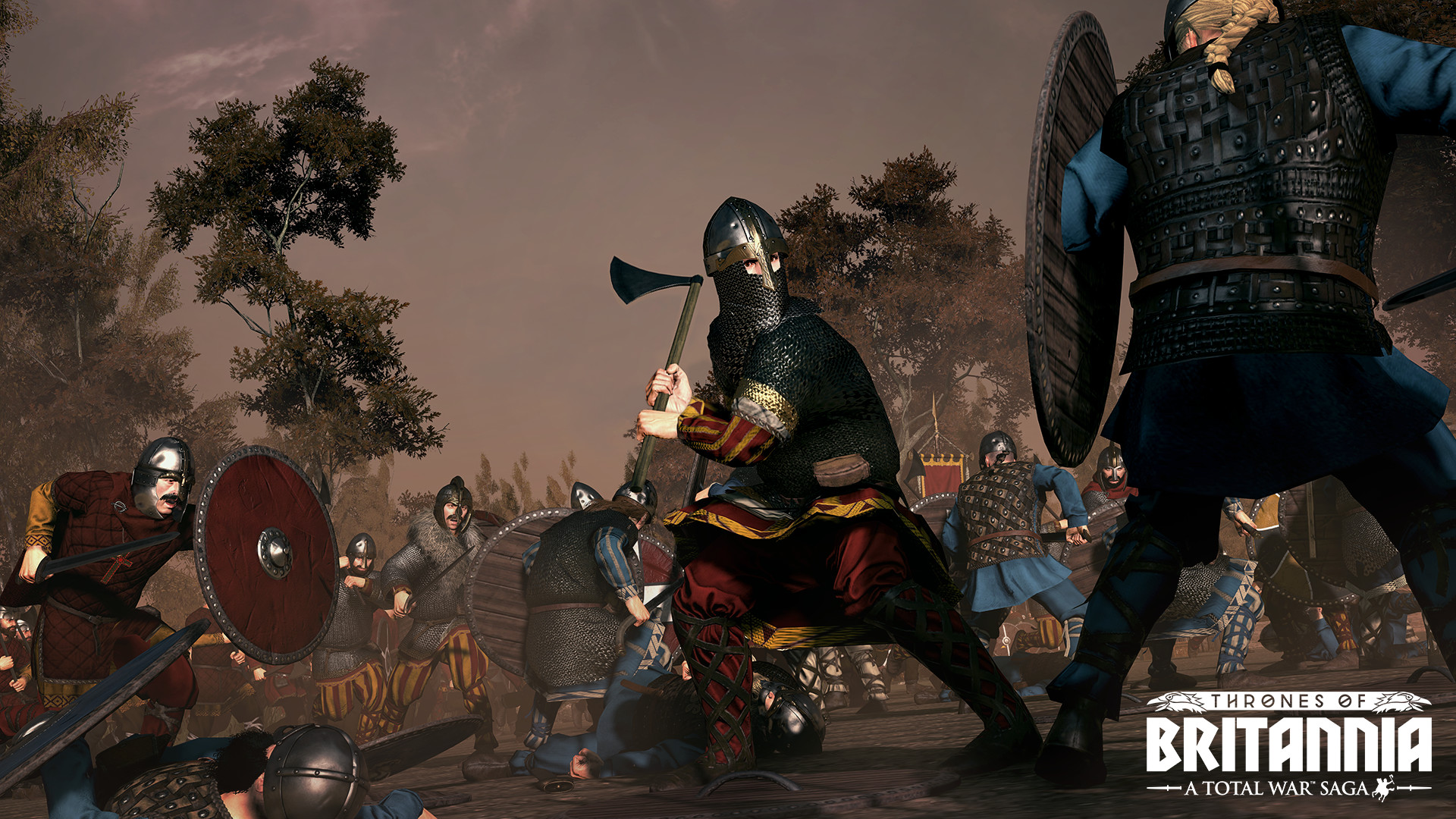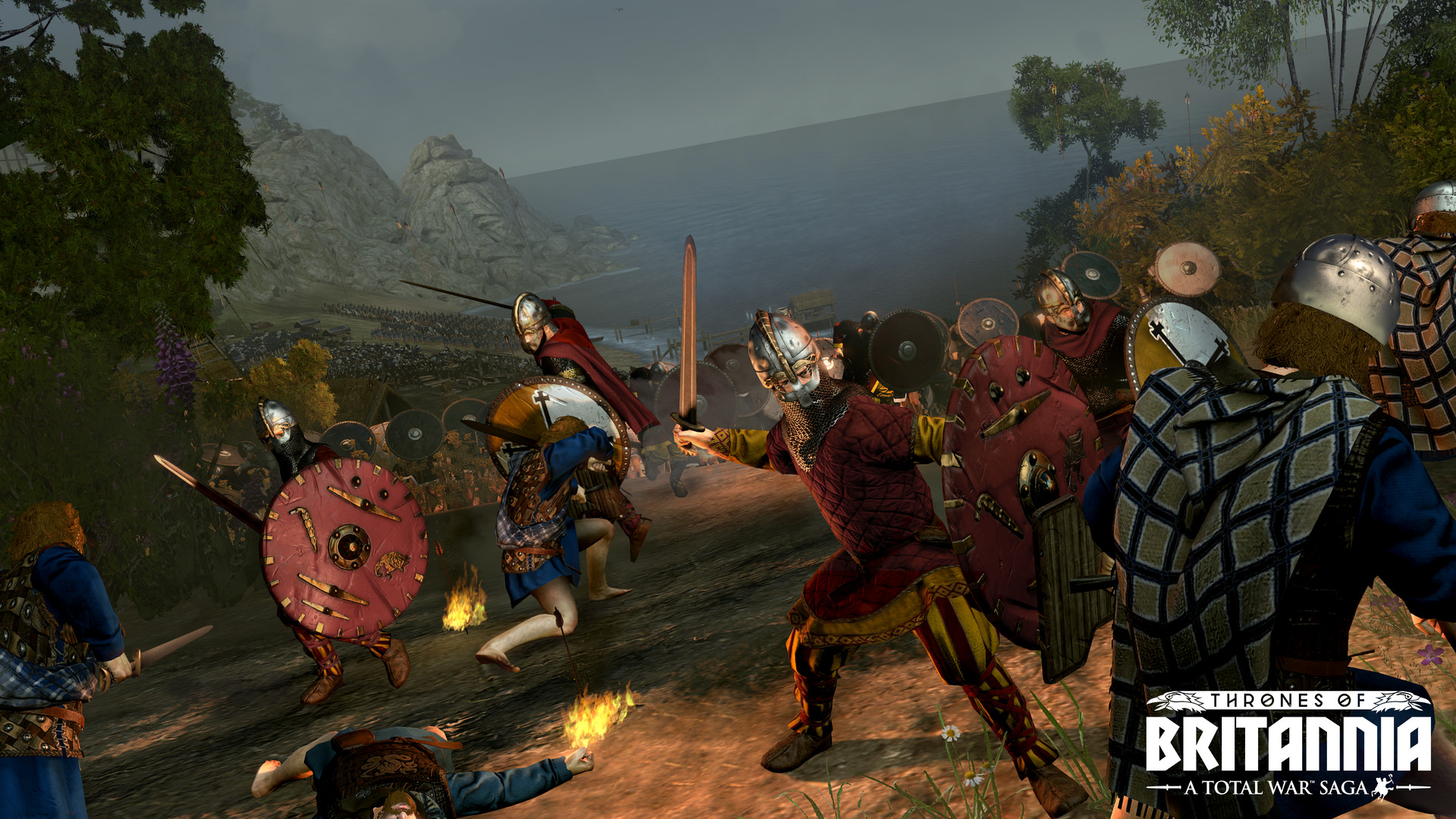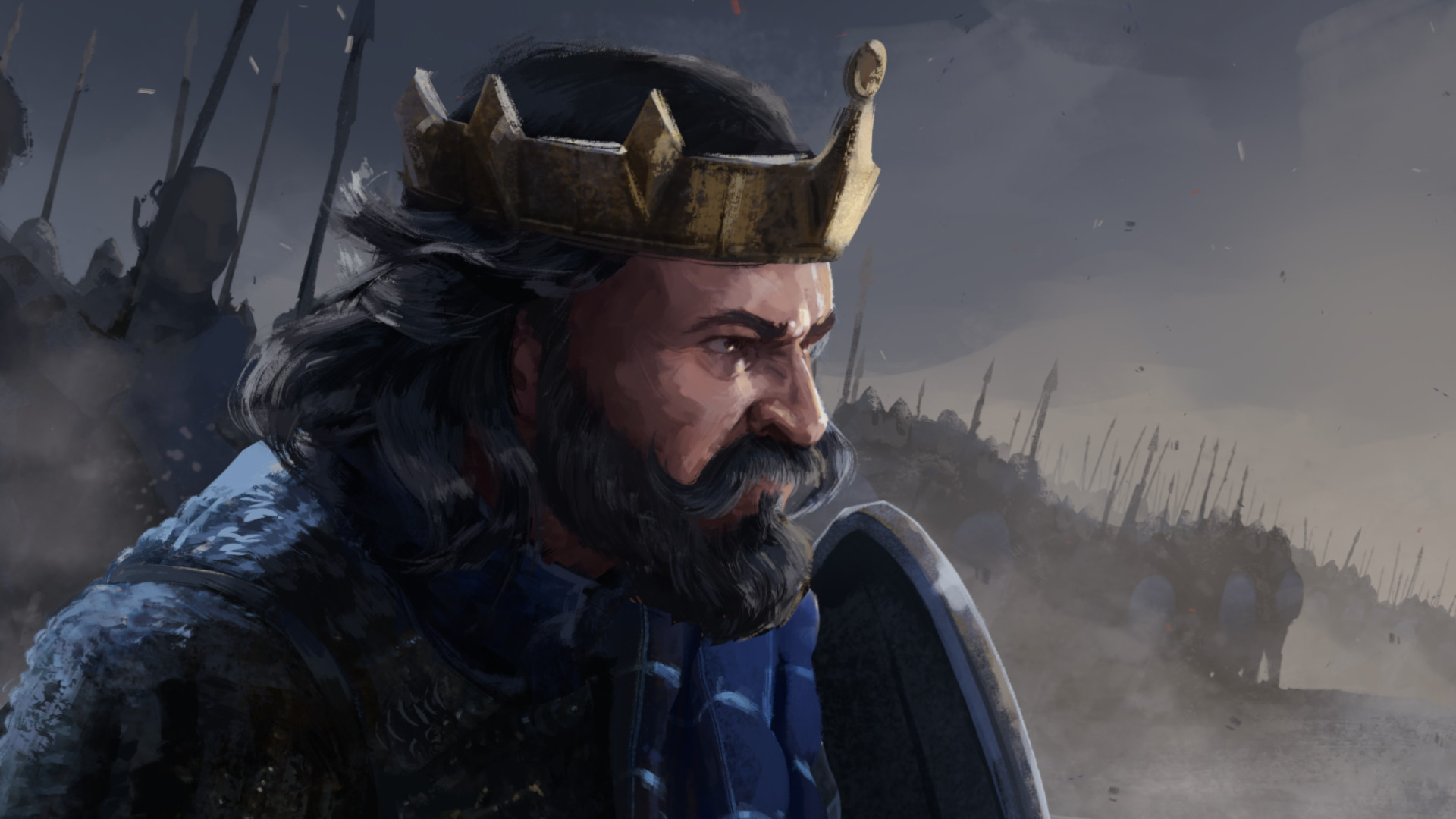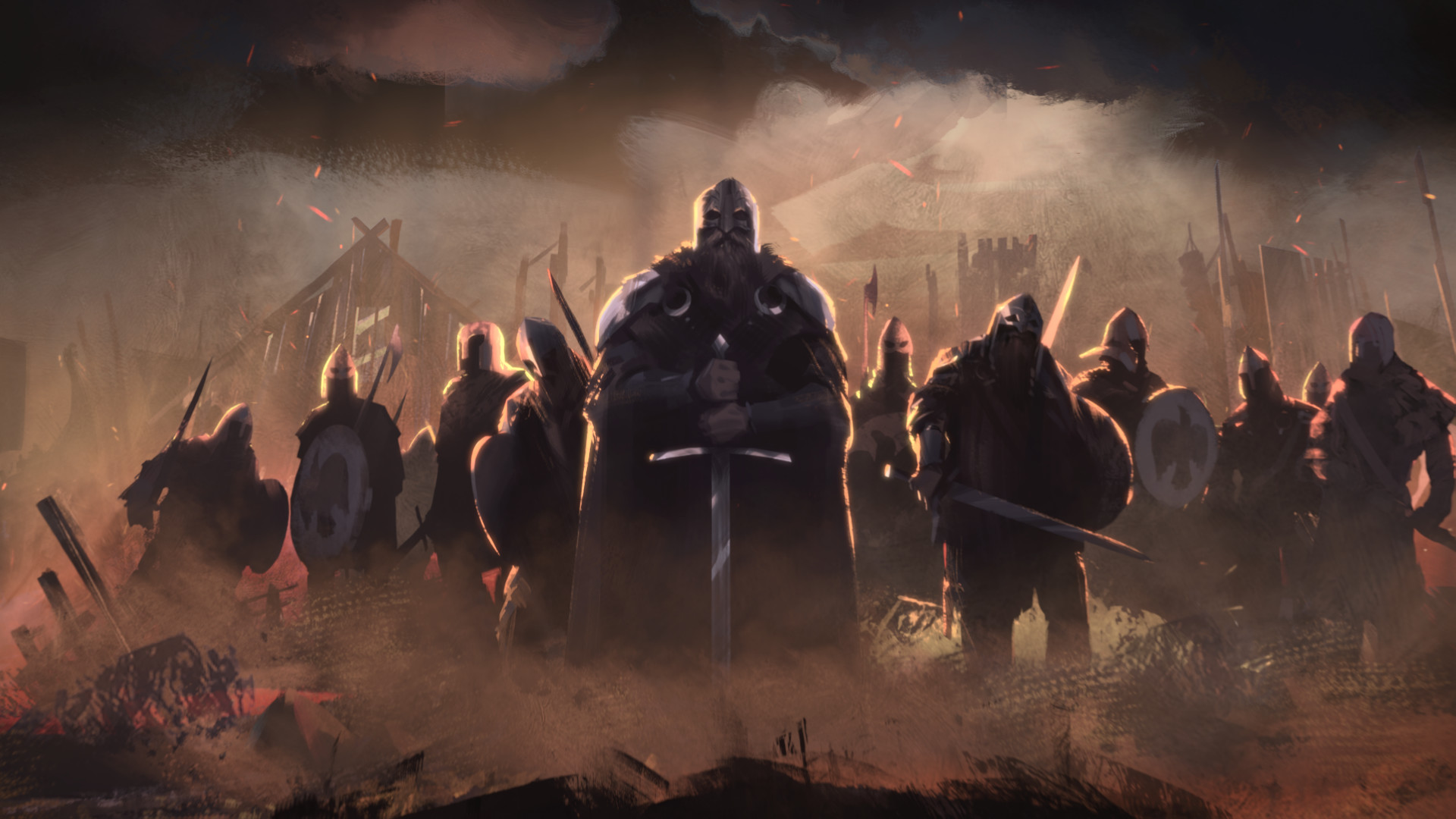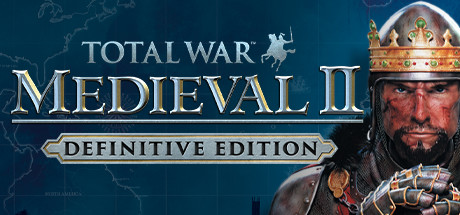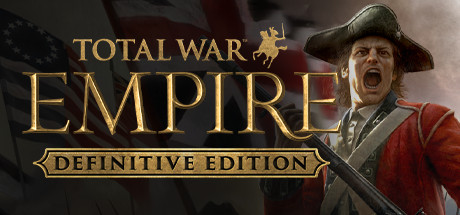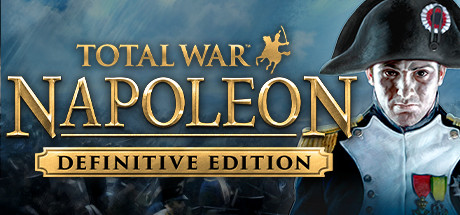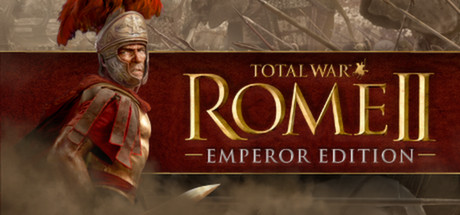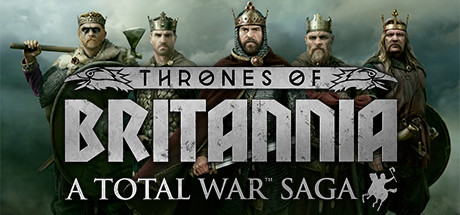
Разработчик: CREATIVE ASSEMBLY
Описание
Total War Academy

THRONES OF BRITANNIA – Steel & Statecraft Update

Today we’ve released a new update for A Total War Saga: Thrones of Britannia. The Steel and Statecraft update builds on some existing mechanics and also address some player feedback from the last update.
Among other things, the update implements a new Political Difficulty option. We understand that some players like to challenge themselves with political manoeuvring, while others prefer to stay away from such back-stabbing. You can now tweak this area of the game separately from Campaign Difficulty. The politics system is also undergoing some other changes, particularly in the events that come about as the result of political actions.
Here are some more highlights of the changes that have been made.
Estates Overhaul
The purpose of Estates was to add challenges in managing a kingdom where each noble is playing the game of intrigue, looking to grab more power and land for themselves. However, the system didn’t have as much impact as we’d have liked, which is why Estates have received a rework to better represent a king granting land to his more important lords, thus ensuring their devotion to the crown. With the power of land ownership comes a responsibility for the owner to properly tend to his holdings – each Estate will offer a positive effect if given to the proper lord, or a negative one if the noble is not suited to presiding over such lands.
The nobles in turn do not sit idly, hoping for deeds to fall in their lap. The Estate Desire traits, which characters previously gained, have been replaced with requests, directed towards the crown in the form of missions. Every so often a lord in your faction will ask to be granted Estates, offering a reward in return. But if you deem the noble ineligible or sense malicious intent, and you ignore their request, their loyalty will start to waiver.
We’ve added more weight to managing your Estates, and to help with that we’ve reorganized the Estates interface. Each lord will list the effects that they provide from Estates they own. Moving Estates around has been made easier – clicking on an Estate will grant it to the selected character on the left. Beware, however, of dealing with Estates that are not in the king’s possession – nobles are quite attached to their lands and will rarely part with them without repercussions.
Traits
Traits depict the story of each character; their upbringing, their personality and the events that have occurred in their lifetime. Sifting through each character’s history can be cumbersome, which is why we’ve stacked traits into groups. Each trait group is now represented by a banner, with all effects of the traits within listed underneath. Clicking on a banner will list all traits within that group, giving a detailed account of the noble’s qualities.
As mentioned previously, each trait group will list how it affects a character’s Estates. The group with the most traits will be marked with a large yellow icon, showing the lord’s dominant characteristics and what effects they grant to the noble’s land ownership.
Recruitment Revamp
Recruitment in Thrones of Britannia is chance based, similar to the way in which mercenaries worked in previous titles. While it’s an interesting challenge to build armies with imperfect composition and size, it has downsides too, such as elite units appearing scarcely, and losing your painstakingly assembled army can be a devastating blow to your campaign.
We’ve replaced this chance-based system with cooldowns. When a unit type is recruited, there’s now a set number of turns before another becomes available. This retains the sense of choice limitation, but rewards planning and removes the random punishment of not having enough units simply because they didn’t appear in the recruitment pool.
The time it takes to build a full army can be lengthy, so recruitment events have been added, granting a quick supply of units to help with defending territories, or adding a helpful push to your conquering.
Buildings, technologies and faction mechanics have all received new effects to improve the recruitment times of units. We’ve also eased the unlock requirements of military technologies, to make meaningful choices in army management more accessible.
Book of Traits (Trait Browser)
With the added importance of character traits, we believe there is more purpose to managing your characters, seeking their best development. All traits present in the game are now listed in the Book of Traits along with the condition of their acquisition.
The details of a trait will be locked until the player acquires that trait for the first time. (We still want players to experiment and discover traits on their own, but unlocked trait information will now be readily available).
The Book of Traits is persistent between campaigns, allowing players to hunt for a specific trait in a later playthrough.
Buildings & Settlement Maps
Villages are getting a second, alternative building path straight from level 2. This should give players the opportunity to fine-tune their economy through minor settlements. The existing paths are vastly unchanged (safe for some minor balance tweaks) for an easier transition.
We’ve also created some new buildings that will feature on all settlement maps (both major ones and villages).
• Viking Gatehouse
• Viking Long Hall
• Viking Turf-roof Hall
• Viking Drinking Hall
• Viking House 1
• Viking House 2
• Viking House 3
• Viking House 4
• Anglo-Saxon Chieftains House
• Anglo-Saxon Great Hall (under construction)
New Major Settlement Maps
Since siege battles in Thrones of Britannia have been popular, we’re making two brand new settlement maps, one based on Bebbanburg Castle, and the other on The Rock of Cashel.
• Map 1 - based on Bebbanburg Castle (used in-game for Bebbanburg and Eidenburg)
• Map 2 - based on Rock of Cashel (used in-game for Caisil and Grianán Aileach)
Mod Support
Last but by no means least, we’ve made a couple of changes to help out Modders. Most notably, the Recruitment window can now accommodate any number of custom units (with a scroll-bar). Also retail pack files now contain exported binaries for all basic UI components, in addition to the already existing composite templates.
And That’s Not All…
The update features improvements to lots of other areas of the game, including updates to battle AI, performance optimisations, visual improvements, UI enhancements and more.
About the Game
A Total War™ Saga: Thrones of Britannia
The year is 878 AD, the embattled English king Alfred the Great has mounted a heroic defence at the battle of Edington, and blunted the Viking invasion. Chastened – but not yet broken – the Norse warlords have settled across Britain. For the first time in nearly 80 years, the land is in a fragile state of peace.

Throughout this sceptred isle, the kings of England, Scotland, Ireland and Wales sense a time of change approaching; a time of opportunity. There will be treaties. There will be war. There will be turns of fortune that become the stuff of legend, in a saga that charts the ascent of one of history’s greatest nations.
Kings will rise. One will rule.
Thrones of Britannia is a standalone Total War game which will challenge you to re-write a critical moment in history, one that will come to define the future of modern Britain. With ten playable factions, you must build and defend a kingdom to the glory of Anglo-Saxons, Gaelic clans, Welsh tribes or Viking settlers. Forge alliances, manage burgeoning settlements, raise armies and embark on campaigns of conquest across the most detailed Total War map to date.

Choose your strategy
The Grand Campaign offers multiple routes to a glorious Victory; aggressively expand your territory through force of arms, acquire renown through construction, advanced technology and influence, or complete a series of unique objectives based on your chosen faction’s history. Once completed, steady yourself for a significant late-game challenge and the final, Ultimate victory condition.
Explore and conquer the British Isles
From the snowy highlands of Scotland to the orchards and meadows of Kent, push back the fog-of-war and unveil the extent of Anglo-Saxon Britain. Varied towns, cities and rural settings inspire a host of different battlefield environments. Experiment with the strategic opportunities afforded by newly capturable minor settlements. Throttle your enemies’ trade routes and coax them out of strong, defensible positions.
Viking warlord or Anglo-Saxon king, define their legend
Each faction will face a series of unique events and branching dilemmas, often based on authentic historical events and issues of the time. Embark on Viking expeditions, manage the Anglo-Saxon peasant economy, each faction feels and plays differently. Carve out unique roles for your King and Nobles, customise their impact by making meaningful choices about their development and determine how their story will unfold.
‘Classic’ Total War gameplay refined
Includes many updates to core Total War mechanics - such as provinces, politics, technologies, recruitment, dilemmas and much more - designed to make your experience more immersive and more meaningful.
Playable factions, cultures and kings:
Thrones of Britannia will include ten playable factions, from five cultures, with a summary below.
The Anglo Saxons – West Seaxe and Mierce
When Roman rule in England concluded, new kingdoms of Germanic stock coalesced in the counties now known as Northumbria, Mercia, Wessex, Essex, Sussex, East Anglia and Kent. The peoples of these regions came collectively to be known as the Anglo Saxons.

West Seaxe
Faction Leader: King Alfred
As the dominant Anglo-Saxon kingdom of southern England, the forces of West Seaxe – or Wessex in modern English – provided the isle’s primary resistance against the incursions of the Great Heathen Army. From the capital city of Winchester, Wessex conquered lands in Surrey, Sussex, Kent, Essex and even Mercia. Alfred’s dogged defense of the Danish invasion laid the foundations for Wessex to unite England under one ruler for the first time in 927 AD.
Mierce
Faction Leader: Ceowulf
From its capital city of Tamworth, the kings of Mierce – known now as Merica - ruled the area now known as the Midlands. At its height, Mierce stretched from Northumbria in the north of England to Kent, Sussex and Wessex to the south. In 877 AD, the Great Heathen Army seized the eastern part of the kingdom to form the Danelaw, or East Engle.
The Gaels – Mide and Circenn
Gaelic culture initially developed in Ireland, their society built around a system of clans and chieftains. They raided and traded with Roman settlements, and by 878 AD had expanded from Ireland to inhabit much of Scotland.
With the influx of the Vikings, some raiders settled in Gaelic lands, becoming the Norse-Gaels. The Scottish Gaels would absorb the Picts to become the Kingdom of Alba – essentially setting the blueprint for modern Scotland.
Mide
Faction Leader: King Flann Sinna
Mide lies at the heart of Ireland. Not just geographically, but politically, intellectually and spiritually. Many High Kings have risen from Mide, and its current ruler, Flann Sinna, aspires to that title.
With many fellow Irish factions nearby, Mide is in a position to potentially bring the disparate clans together, and usher in an era of Irish prosperity. However, threats are never far away… the Vikings of Dyflin have settled to the east, and their power and influence are growing. Will Mide strive to keep the uneasy peace? Unite the clans in a war against these Norse settlers? Or find some other route to supremacy?
Circenn
Faction Leader: Áed mac Cináeda
Circenn was in origin Pictish, but became more heavily influenced by the Gaels and other peoples over time as they were driven away from the relentless Viking raids. 878 AD marked the end of the Viking invasions, but Circenn’s troubles were far from over. While she had a firm hold over the eastern coast of Scotland, many threats still exist – both within and without.
Scoan, the capital of Circenn, was once home to the legendary Stone of Destiny, said to bestow divine strength on her people. Where the stone now resides is a mystery, but if clues can be found, surely the Stone’s recovery would be an adventure worth undertaking…
The Welsh – Gwined and Strat Clut
The Welsh Kingdoms descended from the Celtic Britons who occupied much of the island of Britain from the Iron Age, into and beyond its Romanisation in the First Century.
Ironically, the term ‘Welsh’ derives from the Anglo-Saxon term for foreigner, ‘wealas’, which they applied to the native Britons. The Anglo-Saxons flourished and many of the old Brittonic kingdoms began to disappear.
Gwined
Faction Leader: King Anaraut
The people of Gwined have some claim to the title of 'true Britons', having been driven to the far west by invaders who now call themselves ‘English’. Renowned both for their bardic arts and their skill with the longbow, the Welsh of Gwined thrived under the leadership of Rhodri Mawr.
Rhodri kept Gwined largely free of Vikings and other invaders while expanding its borders. Now he is gone and his lands are divided.
Strat Clut
Faction Leader: Run
Strat Clut is a kingdom of the Old North that can be traced back to the Fifth Century and the Celtic Britons. The realm was formerly based at the fortress of Alt Clut but driven out by a Viking invasion in 870. The current King Artgal was taken captive and reportedly killed in mysterious circumstances. The kingdom reformed further into the valley of the River Clyde under the leadership of his only son Run.
The Great Viking Army – Northymbre and East Engle
In 865 AD, Ragnar’s sons led the Great Viking Army and made landfall in East Anglia. Over the next 15 years the Vikings ranged high and low, from Wessex to The Clyde, conquering towns, claiming victories and suffering their share of defeats until the Battle of Edington in 878 AD, where its leader Guthrum met his match in the young King Alfred and his West Saxon army. Bested in the field, his forces retreated in disarray to a nearby fortress. Flush with success, Alfred’s men gave chase and laid siege. After a fortnight of starvation, the invaders surrendered.
Under the terms of his capitulation, Guthrum was baptised into Christianity and he and his men were allowed to return to East Anglia and settle – provided they kept Alfred’s peace, of course.
Defeated, but never humbled, the Vikings seethe with an all-consuming rage. One does not cage the wolf without consequence…
Northymbre
Faction Leader: Guthfrid
When the Vikings arrived in Northumbria in 867 AD, they took the city of York – or Eoferwic, as was – for their stronghold. And what a bastion it was, with its formidable Roman walls still standing strong 700 years on. King Aelle of Northumbria attempted to wrest the city back from the Danes, but was captured during the attack. In retribution for Aelle’s execution of their father, the sons of Ragnar made an example of him with the horrifying Blood Eagle ritual.
Northumbria remained under Viking control and, after the battle of Edington and the subsequent treaty of Wedmore, a portion of the Great Viking Army marched back to Northumbria, to settle under Alfred’s peace.
East Engle
Faction Leader: Guthrum
Forming the bulk of Britannia’s south-easterly coast, East Engle was the staging-point of the Great Viking Army’s invasion, and the region where many of its warriors settled after the Battle of Edington. Under the rule of the Danish leader Guthrum (or Æthelstan, to use his adoptive name by Alfred) it would ultimately come to be known as the Danelaw.
Yet still, some fight remains in the Danes of East Engle. One does not shed the mantle of glory and become a landsman overnight.
The Viking Sea Kings – Dyflin and Sudreyar
After nearly a century of escalating raids, the Vikings left an indelible stamp on Britannia, altering the course of its history forever. Not least of all culturally, as many smaller bands of Vikings had settled around the isles prior to Alfred’s defeat of the Great Viking army.
These smaller factions traded an existence of ceaseless conflict for a new life in Britannia, establishing their own petty principalities, intermarrying and ultimately becoming part of the warp-and-woof of Britannic life. This mingling of cultures, so emblematic of British history, helped create the rich melting-pot of attitudes, beliefs and language that has made the isles and their people so unique.
Some Vikings never truly settled however; their designs were grander, their hunger for conquest and greatness unquenched. These Sea Kings would continue their bellicose work, heedless of any decree from England’s upstart ruler…
Dyflin
Faction Leader: Bardr
Dyflin was a major port town on the east coast of Ireland, and the site of Britannia’s largest slave market. It was a major site of Viking occupation, and was ruled until 873 by the Viking lord Imar, often associated with Ivar the Boneless, a son of the legendary Viking warlord Ragnar Lothbrok. Viking raiders had wintered there as early as 840 AD, so their association with the region had been a long one, and over time their customs began to take on a more Gaelic flavour as the slow process of integration took its course.
By 878 AD however, Imar’s son Bardr was firmly established on the throne. Would this ambitious Viking ruler seek to seal a lasting peace with the surrounding Gaelic factions? Or return to the ways of Ragnar, and pursue a path of bloodshed and domination? It is hard to ignore the calling of one’s warrior-blood…
Sudreyar
Faction Leader: Eirik
To the west of Alba lies Sudreyar, the Kingdom of the Southern Isles. Comprising the southern Hebrides, these scattered islands were sparsely populated and, bearing the full brunt of the Atlantic weather, were not lands suited to the less-hardy.
Like much of Britannia, these islands saw increasing Viking contact from the 8th Century. Prior to this period they formed part of the Gaelic kingdom of Dalriada, until they fell under Viking control. Over the next century, Scandinavian occupancy took on a distinctly Gaelic flavour (and vice-versa), particularly after 872 AD when Harald Fairhair became king of Norway, and his former opponents flocked to the area.
Materially poor, but offering an excellent base for those of a nautical bent, the isles of Sudreyar are a perfect staging-post for raiders and explorers.
Поддерживаемые языки: english, french, italian, german, spanish - spain, czech, korean, polish, portuguese - brazil, russian, simplified chinese, traditional chinese, turkish
Системные требования
Windows
- OS *: Windows 7 64Bit
- Processor: Intel® Core™ 2 Duo 3.0Ghz
- Memory: 5 GB RAM
- Graphics: NVIDIA GTX 460 1GB | AMD Radeon HD 5770 1GB | Intel HD4000 @720p
- Storage: 30 GB available space
- OS *: Windows 7 / 8 (8.1)/ 10 64Bit
- Processor: Intel® Core™ i5-4570 3.20GHz
- Memory: 8 GB RAM
- Graphics: NVIDIA GeForce GTX 770 4GB | AMD Radeon R9 290X 4GB @1080p
- Storage: 30 GB available space
Mac
- OS: macOS 10.13.4
- Processor: 1.8GHz Intel Core i3 or better
- Memory: 8 GB RAM
- Graphics: 1GB Nvidia 650M, 2GB AMD Radeon M290, Intel Iris Pro 5200 or better (see notes for more details)
- Storage: 15 GB available space
- Additional Notes: The game is supported on the following Macs. To check your Mac model and when it was released, select About This Mac from the Apple menu on your menu bar.
- * All 13" MacBook Pros released since 2016
- * All 15” Retina MacBook Pros released since Mid 2012
- * All 15" Macbook Pros released since Mid 2012 with a 1GB Graphics Card
- * All 21.5” iMacs released since Late 2013 with a 1.8GHz i3 processor or better
- * All 27” iMacs released since Late 2013 (1)
- * All 27" iMac Pros
- * All Mac Pros released since Late 2013
- 1. Late 2012 models with a Nvidia 675MX or Nvidia 680MX graphics cards are also supported.
- * All Mac Mini's since Late 2012
- * All 12" Macbooks released since Early 2015
- * All 13" Macbook Airs released since Mid 2012
- * All 13" Macbook Pros released since Mid 2012
- * All 13” Retina MacBook Pros released since Mid 2012
- * All 21.5” iMacs released since Early 2013
Linux
- OS: Ubuntu 18.04
- Processor: Intel Core i3-2100 or AMD equivalent
- Memory: 8 GB RAM
- Graphics: 2GB AMD R9 285 (GCN 3rd Gen and above), 2GB Nvidia GTX 680 or better
- Storage: 15 GB available space
- Additional Notes:
- * Requires Vulkan
- * AMD graphics cards require Mesa 18.0.0 or later (Mesa 18.0.4 is recommended)
- * AMD GCN 1st and 2nd generation cards are not supported
- * Nvidia graphics cards require driver version 390.59 or later
- OS: Ubuntu 18.04
- Processor: Intel Core i7-3770K
- Memory: 8 GB RAM
- Graphics: 4GB AMD RX 480 or 4GB Nvidia GTX 970
- Storage: 15 GB available space
- Additional Notes:
- * Requires Vulkan
- * AMD graphics cards require Mesa 18.0.0 or later (Mesa 18.0.4 is recommended)
- * AMD GCN 1st and 2nd generation cards are not supported
- * Nvidia graphics cards require driver version 390.59 or later
Отзывы пользователей
Good game, had my king have a heroic fall defending Wales that meant that I my other army could finish sieging London, lost the king but I won the war
Awesome game, totally underated, if this game had the diplomacy of total war 3 kingdoms then it would be a 9/10, the only thing missing would be the naval battles of empire total war.
its a decent game, but definitely on the lower end of the series. overall i rate it a 4.5/10. If you do want this game please wait for it to go on sale
A good game with a nice food mechanic. Lots of factions, however many of them are almost exactly the same. Blends a nice mix of infantry and sea troops.
Purely a sandbox game however, so those who don't enjoy roleplay over a storyline won't enjoy this game as much as Total War Attila or Medieval 2.
I probably fell asleep playing this
Being a die-hard historical total war fan since Rome 1 back in the early 2000s with next to no love for the Warhammer series, I have been disappointed for a long time since Attila Total War. That said, this one is a nice refresh to the series that I actually enjoyed and felt like I had returned to the nostalgic days of decent historical total war. Music, graphics, interesting story concept and game-play are all done right with this one. Only real down side is that once finished - there is little reason to return. It's a short total war with little room to explore other game-play styles as after the playtime mentioned in this review, I was pretty much finished.
+ Historical Total War days!
+ Music and game-play are refreshing!
+ The Last Kingdom anyone!?
- Repetitive campaigns
- Could not find Uhtred of Bebbanburg
Ok, i had great expectations... i was pretty disappointed.
I didn't like the fact that it was sold as a game involving vikings... so i imagined some polished version of the old mod, with raids, and stuff... well, not at all. It's just early middle ages in england (meaning some of the factions were lead by former vikings...that's it).
The game is well polished and graphically nice, but quite limited. First because of the small map, second because of the limited number of allegiances, third because of the "family management" which looks like unfinished.
In short, I played every factions....but it looked like playing the same one with minor modifications.
Launcher started but game never did.
Refunded.
They turned siege battles into capture the flag and it has the wu kong lookin ass arcade animation style 3 kingdoms popularized. Had good potential but has the same disease of all tw games since napoleon
Crashes too much, unstable. Would be a lovely game IF IT WORKED
Great game grap[hics and p[;la
Just woeful of a game. While you cant produce more then 10 troops without start to starve your nation and running out of money, rival factions that own just 1 town can produce 2 20 man strong armies at full strength while while you have to wait days for your armies to become to full strength and by then your town rebel against you and start losing land
Amazing
Highly recommend this game a lot of fun to play also adding lots of mods to modify it to your preferance is also fun
buen juego
I do not really have enough time to actually give this game a proper review but I believe my one positive remark will help the overall rating of the game. Honestly, I didn't plan on getting this game ever because of all the remarks but believe me when I say, those remarks are 1000% correct. The game is limited beyond measures, the factions are copy and paste of each other and the mechanics are limited and such in my books. But it has some features which are nice to see. The combat is still very mesmerising but I can see how people get bored quickly. I believe I can polish 30-50 hours and then get bored but I'll see.
Regardless, it is still a nice game and I find it worthy of being in my Total War collection of games.
3 hours of this + 1.5 hours of spending time with my son
Thanks for reading, Greg x
The two most irritating things is one, you cannot do some minor fortification works for your cities especially along the coast. You cannot station troops everywhere, so raiders just keep picking them off and sacking them without any fight. The AI always seems to know that your main force is up north somewhere so here come raiders from the east. Loose a few cities, lose more income, start from scratch. Minor works and a small garrison would at least be fun to defend.
The second thing is, and maybe I cannot figure it out, but if you have an army stationed in a city and you are attacked by a much larger force, I cannot figure out how to retreat. I do not see that option pop up. So a real smart AI with 20 troops attacks your smaller force in a city that is trying to rebuild and guess what, you and your smaller army just disappear.
Of all the Total War games, this one seems to be the worst on play ability and its fun level.
It's good
good game needs improvement
This game is a lot better than what it gets credit for. Graphics are nice with a very clear design touch that was focused on this specific game and period. With being a Saga title it is very limited in its range of different cultures and unit pool, also the game is rather slow compared to some other TW titles, especially on the campaign map. It has some very interesting ideas going on when it comes to domain management and how your settlements work.
Don’t buy this game unless you’re looking for a fast paced, easy mode Total War game. Small towns don’t get a garrison, which is very annoying when defending but makes it easy to roll through the map with only 2-3 full stack armies. This makes the game much faster than other TW titles if you want to play aggressively, which is nice. Not everyone wants to spend 100+ hours for a single campaign. Some of us have lives.
Buildings are boring, game can lag and sometimes bugs out/crashes, certain achievements don’t work, units don't feel unique. The flavor is pretty good and it's nice to see a game in this time period. It’s not a bad title but it definitely needs some work and is shadowed in comparison to titles like Warhammer or Rome II. As some have said, this would be a much better game if it wasn't a Total War title.
Forgettable but easy and good to play casually.
coming from a man who plays the Attila and Rome II ones. this is really solid. but I wouldv'e wanted a lot more factions. I do not know why this game has bad reviews. it is a solid game. sure I do not really like all the weird Celtic tapestry menu's. they tried to make it look medieval but they did not. and a little bit of france would be nice to. if you love Anglo-Saxons (like me) get this game. I love Alfred.
Fantastic immersive, the hidden gem
Good game, don't compare it to other total wars you'll be disappointed but offers a fun break from Rome 2
Garbo dont buy. most moring, laziest, worst Total War game ever.
dogs bollocks
Should have included a Norman campaign what the hell CA?!
This game is outrageously unbalanced. You can't create garrisons for minor settlements and the AI bombards you with 1 unit armies that take those undefended settlements and then instantly spawn 8 unit, fully stacked armies. Yet, your own armies appear to have half the movement rate and constantly have to turn round and engage provinces that rebel for no apparent reason.
This is the worst and most infuriating Total War game I've ever had the misfortune to play, and I've been playing them ever since Total War: Shogun was first released.
Do not waste your time buying this game. It is AWFUL.
Review for the Steam Award Nomination Badge
The fighting, the ragdolls and the fuckton of diffrent maps are very good. I have only played shogun two before this so im used to the campaign in that game i have tried to play the campaign but its just not good the weird mechanices made me realize im not gonna play this a lot, im only gonna play this game if i wanna see vikings, saxons, albans and normans fight but never for the campaign. So only buy this game if its on a sale but not full price the custom battles are not worth 40 bucks
The simplest total war game
Really enjoyed this game!
Get it on sale. GET IT ON SALE. GET. IT. ON. SALE.
Is this TW title fun? yes sort of, is it better than Attila/Rome 2? Hard argument of no, no it is not. This one to me was a eh whack? Didn't entirely care for it. The time period is great, the nations/leaders they've got included are nice to see. However the map imo and victory goal(s) are bland, short victory and small map. But very few RTS, and for those who don't know TW it does have RTS elements but only if you're actually fighting your battles, 4x/turn based games have an era of just post viking raid British isle unification, so a lot of folks might get enjoyment. It's definitely an overpriced DLC however ON SALE it's not the worst TW to play especially if you want more historically set themed TW than the newer myth/fantasy inclined TW titles like TWWH 1-3, three kingdoms, troy, and pharaoh. However with that being said unless you really REALLY want to play as the time period you really are better off just getting Attila or honestly trying Troy. Troy you can scale the myth/legend to completely off and play a "historic" version or traditional style TW at least with no magic or special abilities or anything like that.
Playing in 2024 and its my favorite Total War since Shogun 2. Great art direction, awesome and massive siege battles and captivating historical period.
I've a bad habit of buying every Total War game and then not finding time to play them.
Well, I finally dusted off Britannia. It was A little thin on flavour, but overall quite fun.
City managment sucks very little customizations. The city view of the proverance sucks. The spawning of armys in far off lands after you capture a farm is dumb. The unit diversity sucks. The abilitys of generals are not great. the agenst are week. THis game is a flop. The AI builds citys poorly.
Thought I'd give it a try on a steep sale considering that I've played every other Total War game.
This one is, sadly, just a half finished pile of sh*t. Atleast with Troy and Pharaoh they pulled themselves together and actually finished the games after release, with this one they couldn't even be bothered.
Hopefully they'll revisit this era in the future in a bigger scope (incl. Norway / Denmark ..) and actually make a good TW game out of it.
3/10 Refunded.
It is actually a very good game. The graphics are nice and the map is fantastic.
Good game, but the simplest total war game.
Keep in mind it has no agents and that is a downgrade.
However, campaign map is cool and SIEGES ARE THE BEST IN THE FRANCHISE.
Broken achievements....
This game is poorly designed and when compared to other Total games (I got 1000 hours spent on total war games) this game is nothing but a massive disappointment and a kick in the teeth no matter what price you bought it for. It hurts for me to say it because I'm a big fan of the time period and I'm from Ireland.
Campaign Events:
The developers tried to work the historical narrative into game in a really poorly thought out manner. Random events can completely go against you and just destroyed your campaign leaving you frustrated. A viking horde might just pop out of no where while you're in a full scale war with your neighbors and suddenly your just fucked. And sometimes they pop up somewhere that doesn't even make sense! I didn't know vikings came from America! Or, if you take a particular settlement (in my case playing as Mide I took Dublin) the faction just suddenly gets to consolidate all the viking nations on the island into one massive viking empire that's ready to rip your mediocre nation to shreds.
Campaign Dynamics/Map:
Your minor settlements don't have garrisons so if you want to defend them from random viking armies spawning on the coast then good luck. Also, when you're finishing off a faction and trying to destroy their last few minor armies they can just run around your country, as you frustratingly chase them, capturing your minor settlements. You sometimes spend 4 turns just trying to chase down a one unit army.
Battle:
Boring, clunky, lack of variety in units, and battlefields have to no real significant strategic advantage to using different terrain. Just the same shit battle after battle for your whole campaign.
There's a lot more that I want to criticize about this game but it'd turn into an essay and I don't want to waste more of my time with this game.
Overall, an objectively bad game and I don't know why you would buy this game instead of Rome 2 total war or even Attila if you want a historical total war. Yes, even Attila is miles better than this game.
this is my first modern total war. ive never played anything past shogun 2, this a underrated total war very fun!
Clunky, dull, old and it shows. I wanted to like this, the styling and aesthetics are lovely, but it lacks all the features of the modern total war games. No army stances??? Map is pathfinding is obscure, theres no building tree for the settlements so you have no idea of your options. It just fails to excite and this is from someone who still goes back to TW empires.
Good evolution from Attila, not huge leap and some bits that I would have like to have included, but good replayable game
great game
simple but cool, Im still new but this game is very fun and I see myself playing it for over 70 hours! 8.1/10
good game, and fantastic time period to choose from. But graphics could be a little better
Thrones of Britannia is a Total War game with a much smaller scope than usual, just covering the British Isles during the Viking Age. As a result there is far less variety factions and in units than other Total War titles. Most factions focus on infantry and most battles will be decided by the front line fight. I would recommend this game if you are a fan of the period or like infantry focused factions from other Total War games.
Genuinely not bad to be honest. If its on sale then I think its worth a try. Its a solid overall game with clearly a lot of passion put into it. Its just a Saga game so dont expect it to be a big as Rome 2.
There must be something wrong with me, because i absolutely love it.
Игры похожие на A Total War Saga: THRONES OF BRITANNIA
Дополнительная информация
| Разработчик | CREATIVE ASSEMBLY |
| Платформы | Windows, Mac, Linux |
| Ограничение возраста | Нет |
| Дата релиза | 26.01.2025 |
| Отзывы пользователей | 69% положительных (6725) |

